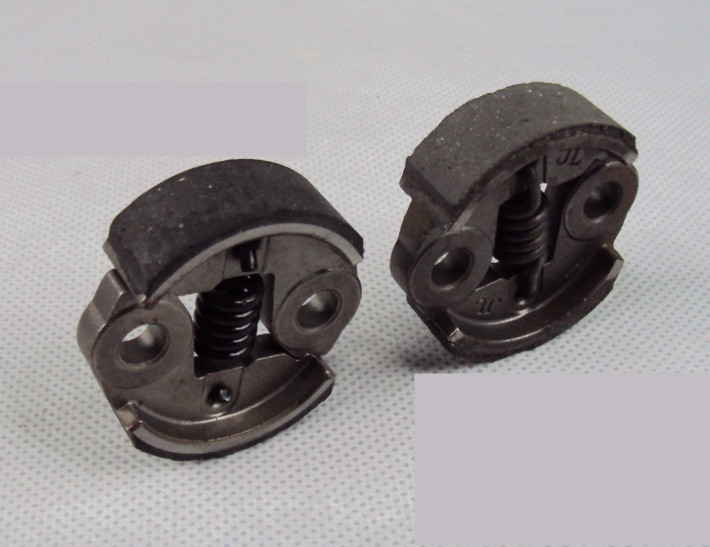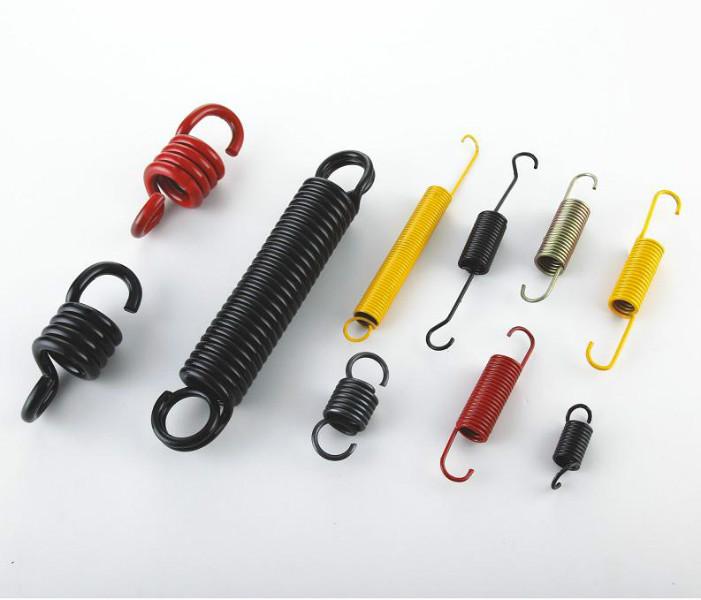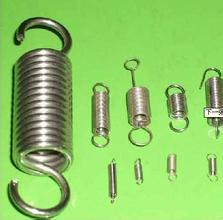The unprocessed pesticide produced by the factory is called the original drug. In addition to a few varieties of the original drug can be used as a fumigant, the vast majority need to add some adjuvants, to make a certain form of pharmaceuticals, can be applied in production, this form of agent is called a dosage form.
In the prevention and control of flower pests and diseases, some flower farmers do not understand the dosage form of pesticides and use them indiscriminately. The result is not caused by phytotoxicity, or the expected control effect is not achieved. The author describes several pesticide formulations and methods of use.
Emulsifiable EC is also known as an emulsion. It is a transparent oily liquid prepared by mixing a raw material, an organic solvent and an emulsifier in a certain ratio. The solvent is used to dissolve the original drug, and the emulsifier uniformly mixes the oil and the drug. The pH is generally 6 to 8 and the stability is above 99.5%. The processing method of the cream is simple, the content of the active ingredient is high, the use is convenient, and the application is wide, and the utility model is mainly used for spraying, and can also be used for preparing poisonous soil, soaking seeds or pouring. When sprayed, the liquid adheres well to the surface of the plant and is not easily washed away by rain. The control effect is good and the residual effect period is longer. The disadvantage is that the cost is high, and the organic solvent has the effect of increasing the penetration of pesticides into plants, plants and human bodies. If used improperly, it is easy to cause phytotoxicity and poisoning of humans and animals.
The powder is mixed with a filler such as a pesticide and a filler such as clay and clay. The powder preparation prepared by mechanical pulverization requires 95% of the fineness to pass through a 200 mesh sieve. The active ingredient does not fail during storage and does not agglomerate. Deterioration, good flow and dispersibility when spraying. The powder is not easily wetted by water and can be dispersed and suspended in water, so it cannot be applied by water spray. A low-concentration powder is used directly for dusting. High-concentration powder can be used for seed dressing, soil treatment or bait. The powder is easy to use, has high work efficiency, is not restricted by water source, and has wide application. However, it is easy to drift when spraying powder, pollute the surrounding environment, and it is not easy to adhere to the surface of flower plants, and the dosage is large, and the residual effect period is short.
Wettable powder It is a powdery preparation prepared by mechanical mixing of the original drug plus a filler, a suspending agent or a wetting agent. Its fineness is 99.5% through a 200 mesh screen. The wettable powder can be wetted by water and uniformly dispersed in water, and the suspension rate in water is generally above 60%. Wettable powders are mainly used for water spray and cannot be used for direct dusting. Its advantage is that the sprayed droplets are relatively thin, and the adhesion on the plant body surface is strong. The application is less affected by the wind, the control effect is better than the powder of the same pesticide, and the residual effect period is longer. However, the quality of the humectant is required to be good. If the suspension property is not good, it is easy to precipitate, causing uneven spraying, affecting the efficacy or causing phytotoxicity.
Granules Granules are granule preparations made from the original drug, carrier (ceramic or fine sand, clay, cinder, etc.) and auxiliaries. The soil preparation is prepared by mixing a powder or a wettable powder or an emulsifiable concentrate with a carrier and drying it in a certain ratio. The granules have good sedimentation property, low drifting property, and little influence on non-target organisms. It can control the release rate of pesticides and has a long residual period. The application is convenient not limited by the water source, and at the same time, the poisonous pesticide can be low-toxic and safe for the application personnel. Mainly used for filling the heart, spreading, and applying.
Suspension A viscous suspension of the original drug, water, dispersant, antifreeze, and the like. Such as 40% carbendazim suspension and 50% sulfur suspoemulsion. Mainly used for conventional spray, low-volume spray and soaking.
Tobacco agent It is a fine powder made up of a pesticide and a combustion improver and an oxidant. The medicament has the advantages of convenient use, labor saving, and can be spread to places where Other control methods cannot be reached, and is suitable for controlling pests and diseases and forest pests and diseases in warehouses and greenhouses.
Water Dispersible Granules It is a new granular form of the drug developed in recent years. It is made of solid pesticides, wetting agents, dispersing agents, thickeners and other additives and fillers. It can be disintegrated into suspension in the presence of water. The dosage form is characterized by good flowability, convenient use, no dust flying, good storage stability, and the advantages of wettable powder and suspension.
Sustained release agent A sustained release agent is a dosage form made by physically or chemically storing pesticides in processed products (usually using waste plastics, bark, organic compounds, etc.). The slow release of pesticides during use can effectively prolong the efficacy of pesticides, so the residual effect period is prolonged, and pollution and toxicity are reduced. The usage is generally the same as granules.
Aqueous agent The water-soluble original drug is directly dissolved in water to prepare a water agent, which can be sprayed by diluting with water to the desired concentration. The water agent is not resistant to storage, is prone to hydrolysis failure, has poor wettability, weak adhesion, and has a long residual effect period.
Water Solvent It is a soluble powder made by directly adding water to a soluble drug. When water is added, it is dissolved into a water agent, which can be directly sprayed, and the water solvent is a soluble powder. The dosage form is simple in processing, convenient to use, good in efficacy, and convenient for packaging, transportation and storage.
In addition, there are pesticide formulations such as tablets, bricks, pastes, and oils.


In the prevention and control of flower pests and diseases, some flower farmers do not understand the dosage form of pesticides and use them indiscriminately. The result is not caused by phytotoxicity, or the expected control effect is not achieved. The author describes several pesticide formulations and methods of use.
Emulsifiable EC is also known as an emulsion. It is a transparent oily liquid prepared by mixing a raw material, an organic solvent and an emulsifier in a certain ratio. The solvent is used to dissolve the original drug, and the emulsifier uniformly mixes the oil and the drug. The pH is generally 6 to 8 and the stability is above 99.5%. The processing method of the cream is simple, the content of the active ingredient is high, the use is convenient, and the application is wide, and the utility model is mainly used for spraying, and can also be used for preparing poisonous soil, soaking seeds or pouring. When sprayed, the liquid adheres well to the surface of the plant and is not easily washed away by rain. The control effect is good and the residual effect period is longer. The disadvantage is that the cost is high, and the organic solvent has the effect of increasing the penetration of pesticides into plants, plants and human bodies. If used improperly, it is easy to cause phytotoxicity and poisoning of humans and animals.
The powder is mixed with a filler such as a pesticide and a filler such as clay and clay. The powder preparation prepared by mechanical pulverization requires 95% of the fineness to pass through a 200 mesh sieve. The active ingredient does not fail during storage and does not agglomerate. Deterioration, good flow and dispersibility when spraying. The powder is not easily wetted by water and can be dispersed and suspended in water, so it cannot be applied by water spray. A low-concentration powder is used directly for dusting. High-concentration powder can be used for seed dressing, soil treatment or bait. The powder is easy to use, has high work efficiency, is not restricted by water source, and has wide application. However, it is easy to drift when spraying powder, pollute the surrounding environment, and it is not easy to adhere to the surface of flower plants, and the dosage is large, and the residual effect period is short.
Wettable powder It is a powdery preparation prepared by mechanical mixing of the original drug plus a filler, a suspending agent or a wetting agent. Its fineness is 99.5% through a 200 mesh screen. The wettable powder can be wetted by water and uniformly dispersed in water, and the suspension rate in water is generally above 60%. Wettable powders are mainly used for water spray and cannot be used for direct dusting. Its advantage is that the sprayed droplets are relatively thin, and the adhesion on the plant body surface is strong. The application is less affected by the wind, the control effect is better than the powder of the same pesticide, and the residual effect period is longer. However, the quality of the humectant is required to be good. If the suspension property is not good, it is easy to precipitate, causing uneven spraying, affecting the efficacy or causing phytotoxicity.
Granules Granules are granule preparations made from the original drug, carrier (ceramic or fine sand, clay, cinder, etc.) and auxiliaries. The soil preparation is prepared by mixing a powder or a wettable powder or an emulsifiable concentrate with a carrier and drying it in a certain ratio. The granules have good sedimentation property, low drifting property, and little influence on non-target organisms. It can control the release rate of pesticides and has a long residual period. The application is convenient not limited by the water source, and at the same time, the poisonous pesticide can be low-toxic and safe for the application personnel. Mainly used for filling the heart, spreading, and applying.
Suspension A viscous suspension of the original drug, water, dispersant, antifreeze, and the like. Such as 40% carbendazim suspension and 50% sulfur suspoemulsion. Mainly used for conventional spray, low-volume spray and soaking.
Tobacco agent It is a fine powder made up of a pesticide and a combustion improver and an oxidant. The medicament has the advantages of convenient use, labor saving, and can be spread to places where Other control methods cannot be reached, and is suitable for controlling pests and diseases and forest pests and diseases in warehouses and greenhouses.
Water Dispersible Granules It is a new granular form of the drug developed in recent years. It is made of solid pesticides, wetting agents, dispersing agents, thickeners and other additives and fillers. It can be disintegrated into suspension in the presence of water. The dosage form is characterized by good flowability, convenient use, no dust flying, good storage stability, and the advantages of wettable powder and suspension.
Sustained release agent A sustained release agent is a dosage form made by physically or chemically storing pesticides in processed products (usually using waste plastics, bark, organic compounds, etc.). The slow release of pesticides during use can effectively prolong the efficacy of pesticides, so the residual effect period is prolonged, and pollution and toxicity are reduced. The usage is generally the same as granules.
Aqueous agent The water-soluble original drug is directly dissolved in water to prepare a water agent, which can be sprayed by diluting with water to the desired concentration. The water agent is not resistant to storage, is prone to hydrolysis failure, has poor wettability, weak adhesion, and has a long residual effect period.
Water Solvent It is a soluble powder made by directly adding water to a soluble drug. When water is added, it is dissolved into a water agent, which can be directly sprayed, and the water solvent is a soluble powder. The dosage form is simple in processing, convenient to use, good in efficacy, and convenient for packaging, transportation and storage.
In addition, there are pesticide formulations such as tablets, bricks, pastes, and oils.
ã€Comment】 ã€Print this article】 ã€Close this page】 ã€Large, medium and small】
Extension springs are attached at both ends to other components. When these components move apart, the Spring tries to bring them together again.Extension spring is a kind of spiral spring,which bears axial tension. It is made of raw material which the section is circle. When it doesn`t bear the burden,there is no gap between the coils.





Extension Spring,Stainless Steel Extension Springs,Small Extension Springs,Industrial Extension Springs
Changyi Precision Spring Co.,Ltd , http://www.cps-spring.com